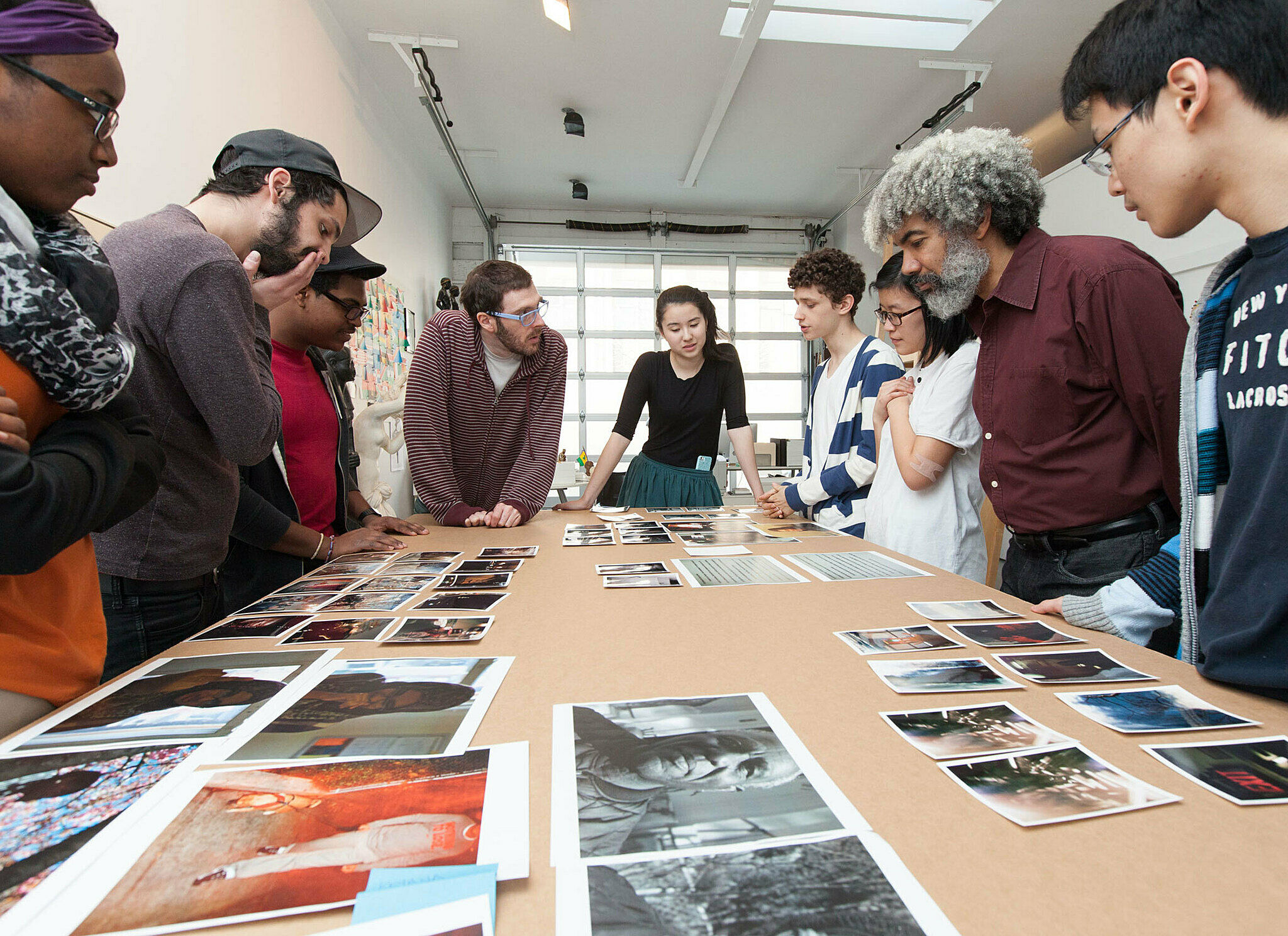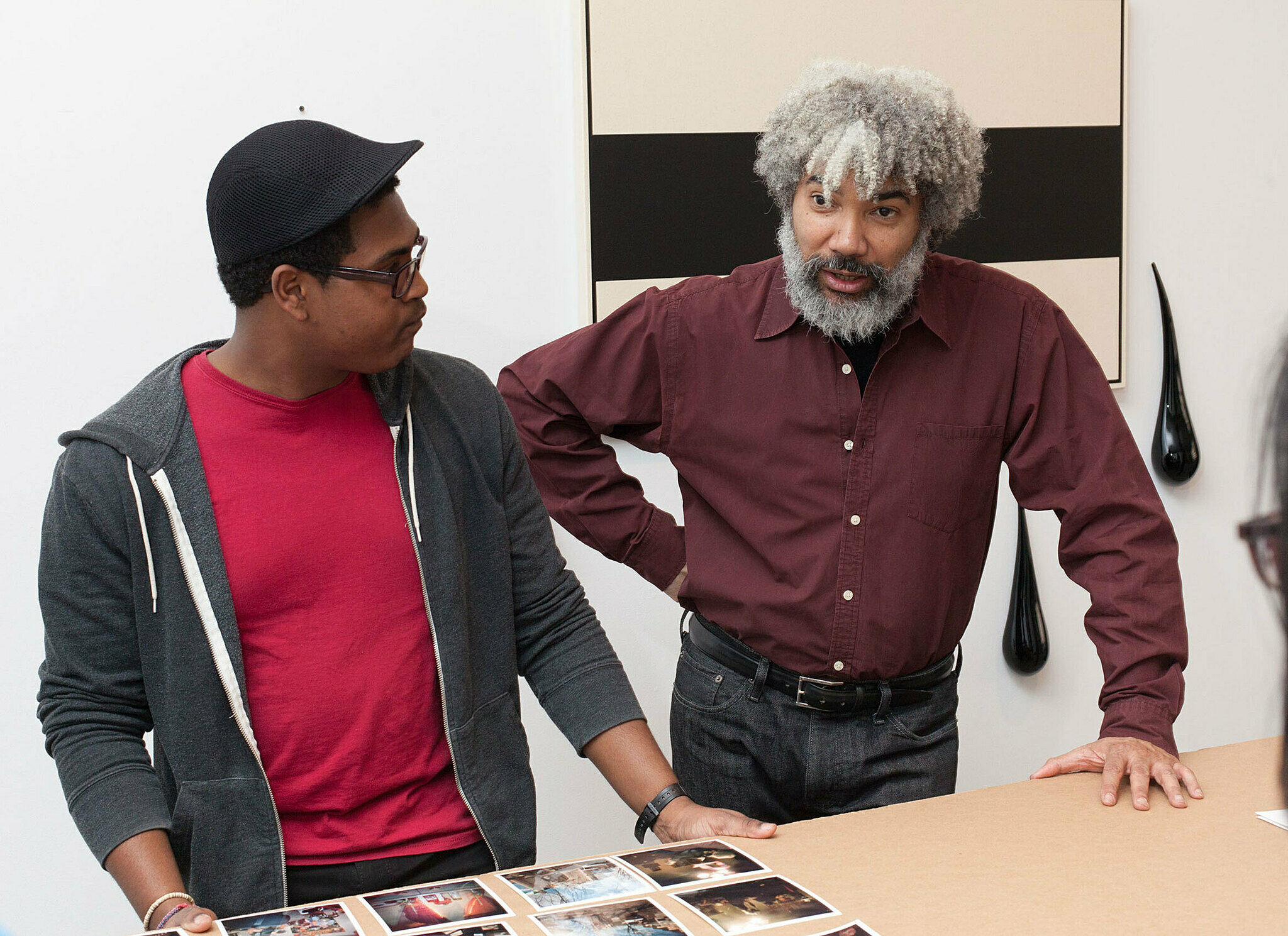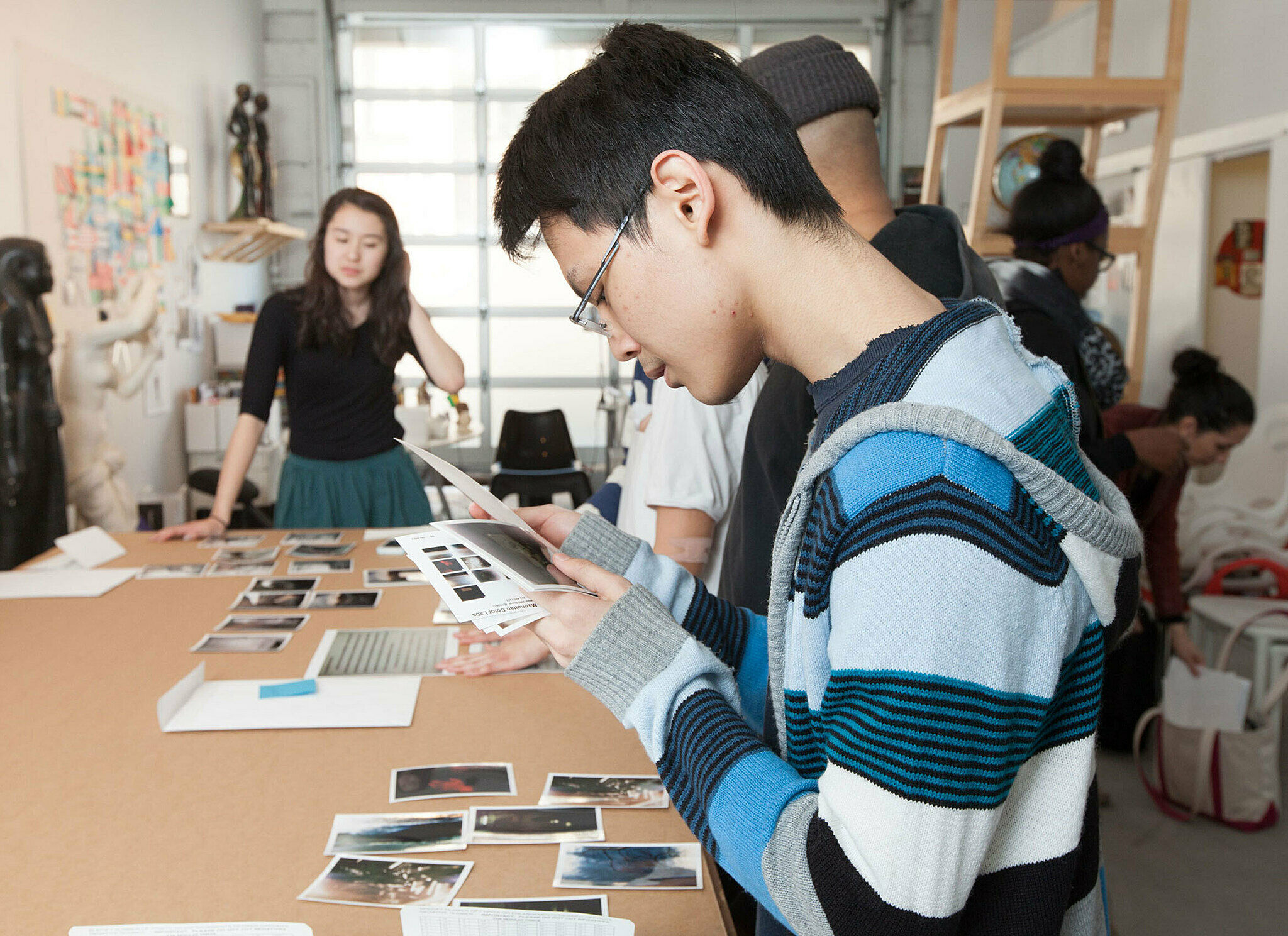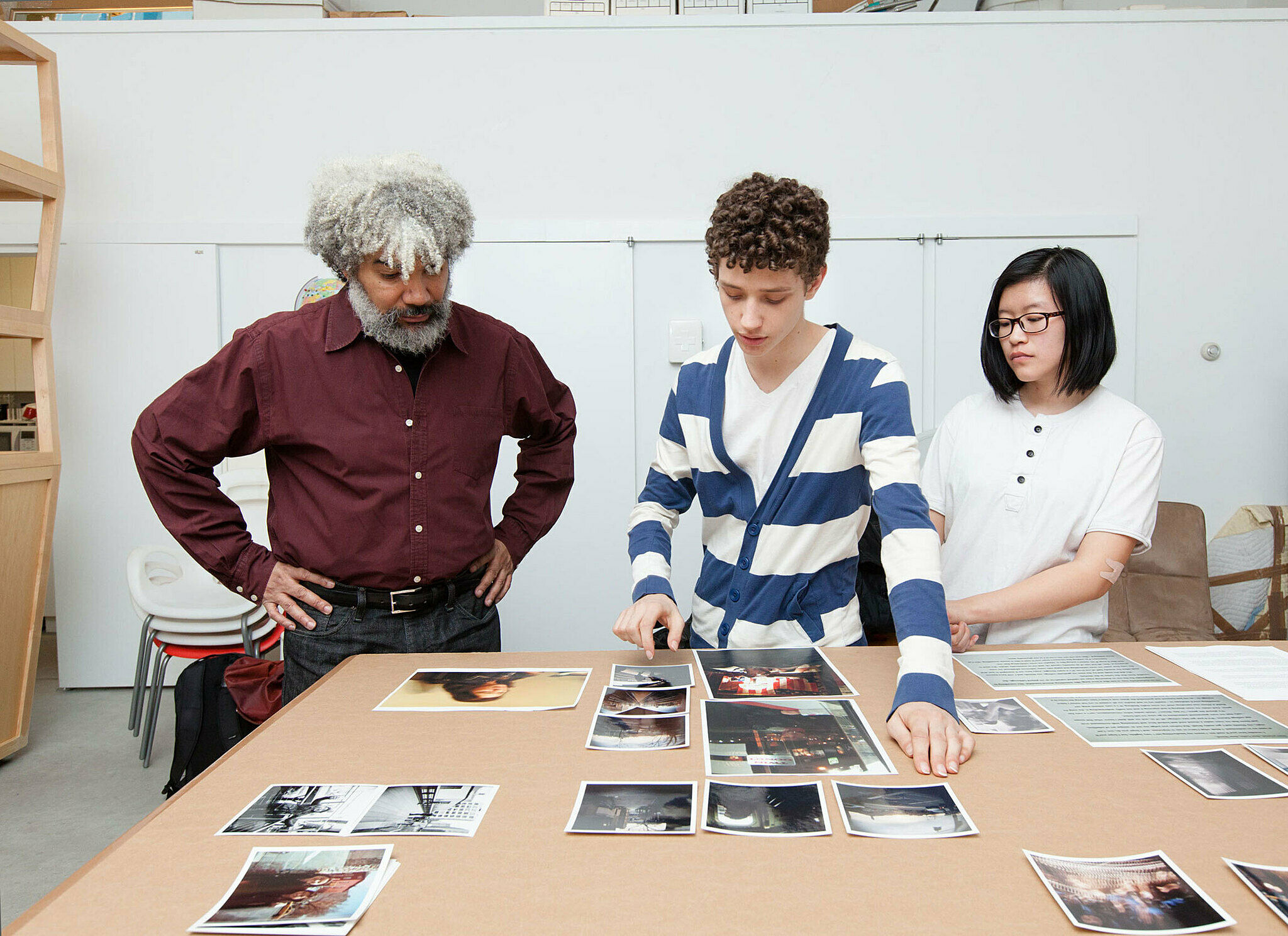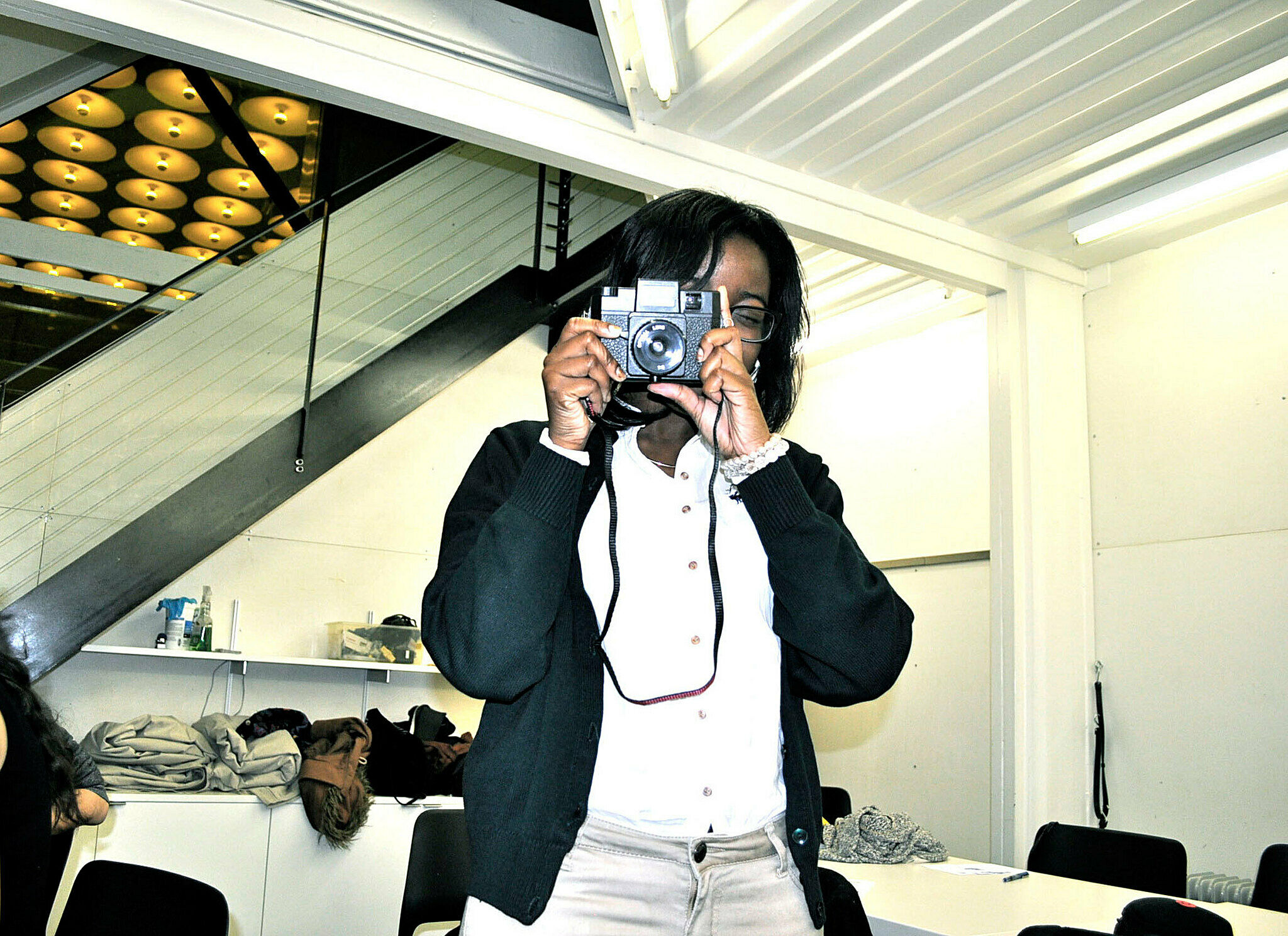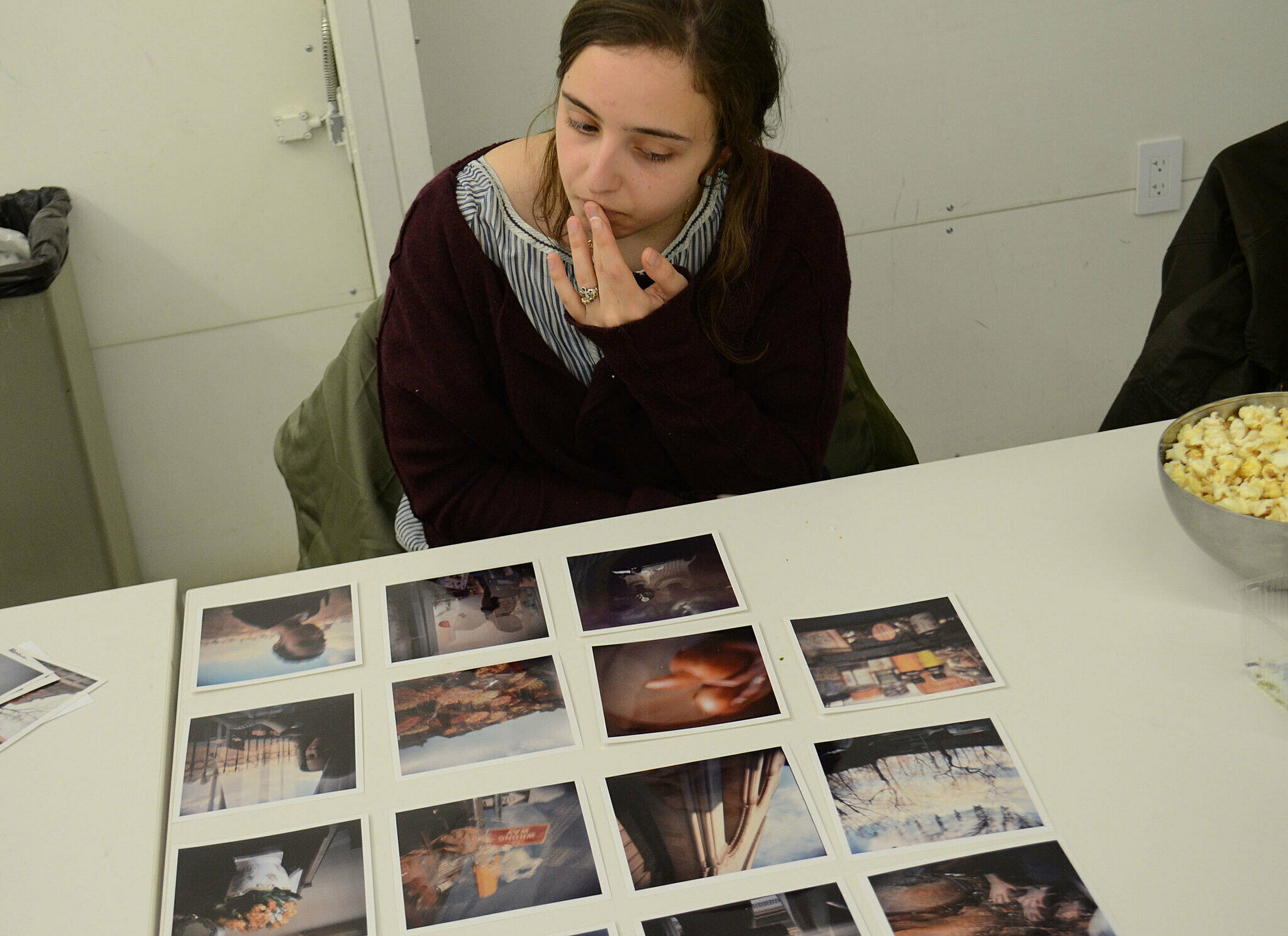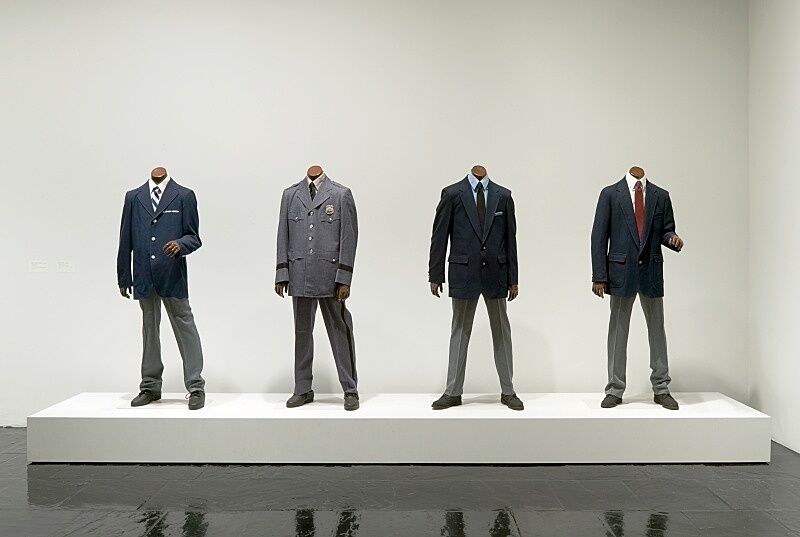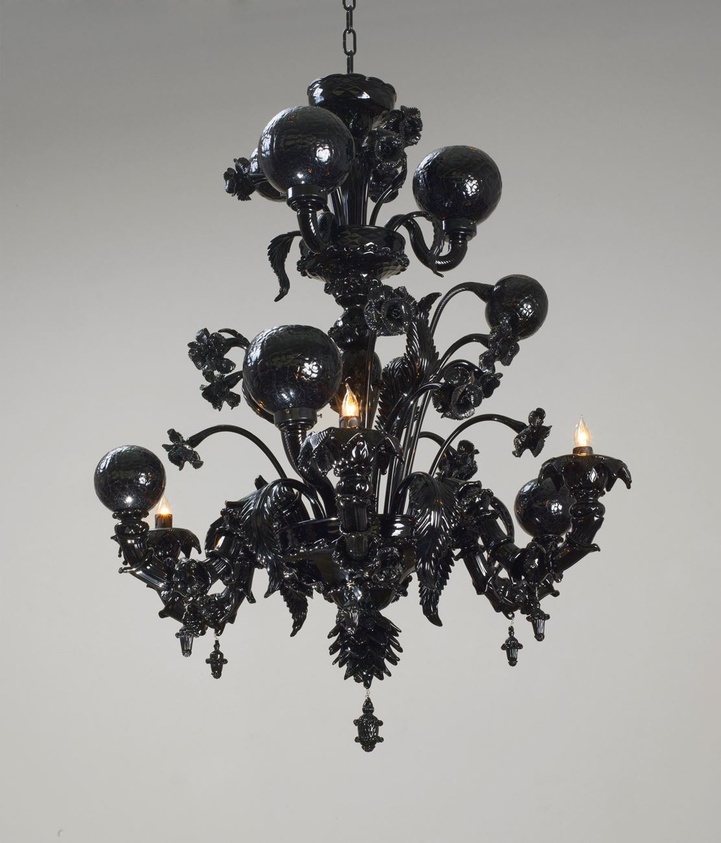“Am I As Much As Being Seen?”
Fred Wilson Collaborates With
Whitney Teens
Dec 17, 2013
The Whitney’s Youth Insights (YI) program is a free after-school program for New York City high school students, providing opportunities for teens to collaborate and discuss art critically with artists. Youth Insights Leaders, teens who have who have completed at least one semester of the program, organize public events, develop interactive guided tours of the Museum, and generate online materials for their peers.
When The Laurie M. Tisch Illumination Fund invited the Youth Insights program to make an exhibition for their office and gallery space, YI Leaders collaborated with artist and Museum Trustee Fred Wilson to conceptualize and create a photography-based project. Over the course of the spring 2013 semester, they met with Wilson in his studio to learn about his working methods and ideas, and discussed what it means to be a teen in New York City today. Together, they decided to explore the theme of observation in the teens’ lives.
Using large-format film or digital cameras, YI Leaders captured images of their neighborhoods, families, and communities. The project’s title, “Am I As Much As Being Seen?” is a quote from Samuel Beckett’s one-act work, Play, which deals with complex questions of representation. YI Leader Elizabeth Akant explains, “A major struggle of adolescence is the way we are perceived by others, the way we perceive ourselves, and the way we truly are or truly wish to be. . . . The guideline for taking photographs was to keep the Beckett line in mind as our theme.”
Wilson actively explores issues of perception in his own work, and often situates it within the context of the museum space. As he discusses in a Whitney Stories video, his relationship with museums is long and complex. Early in his career he worked as a museum guard, and recalls being struck by a simultaneous sense of objectification and hiddenness: “I felt we were always on display. But the irony for me was that as much as we were on display, we were invisible.” He has since made multiple works that address this concern, and also carried this interest in observation and attention to his studio critiques with the teens.
In focused sessions, Wilson helped the students articulate the meanings present in their photographs, and worked with them to select the final images for the exhibition. After the pictures were framed and the exhibition installed, an opening reception in April offered the group an opportunity to celebrate and reflect on the project and its lessons—among them, the value of collaboration, dialogue, and critique.

